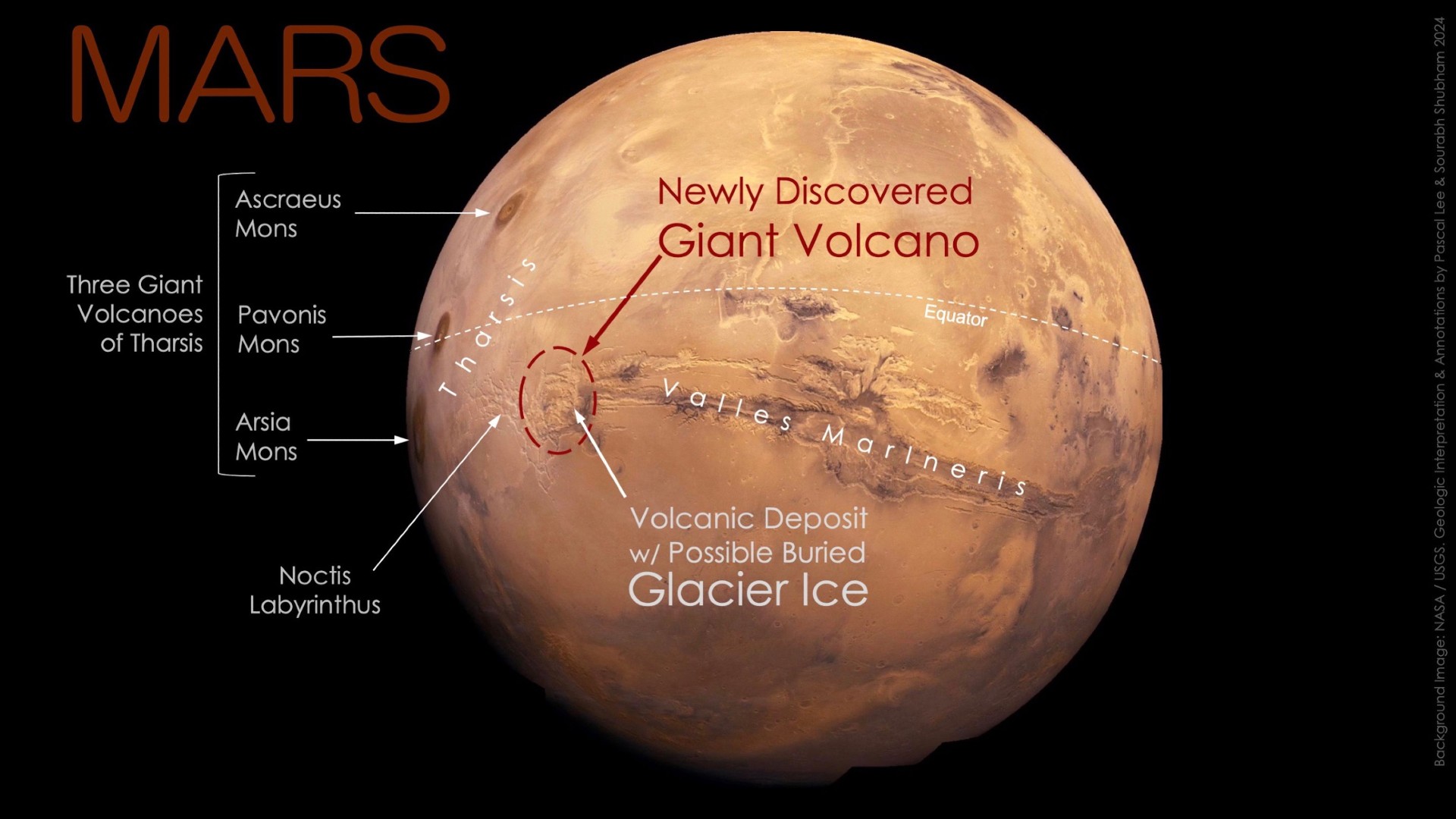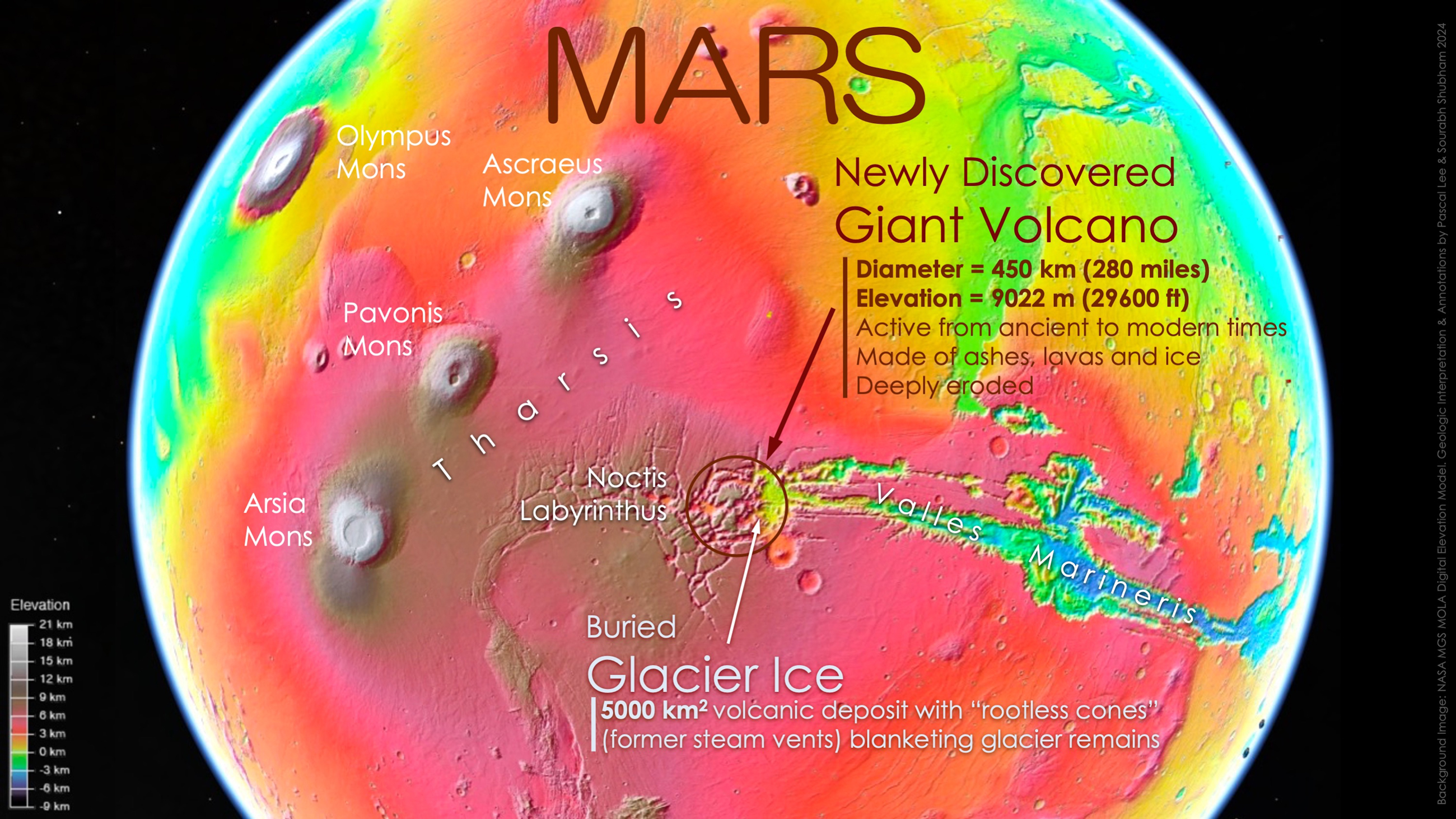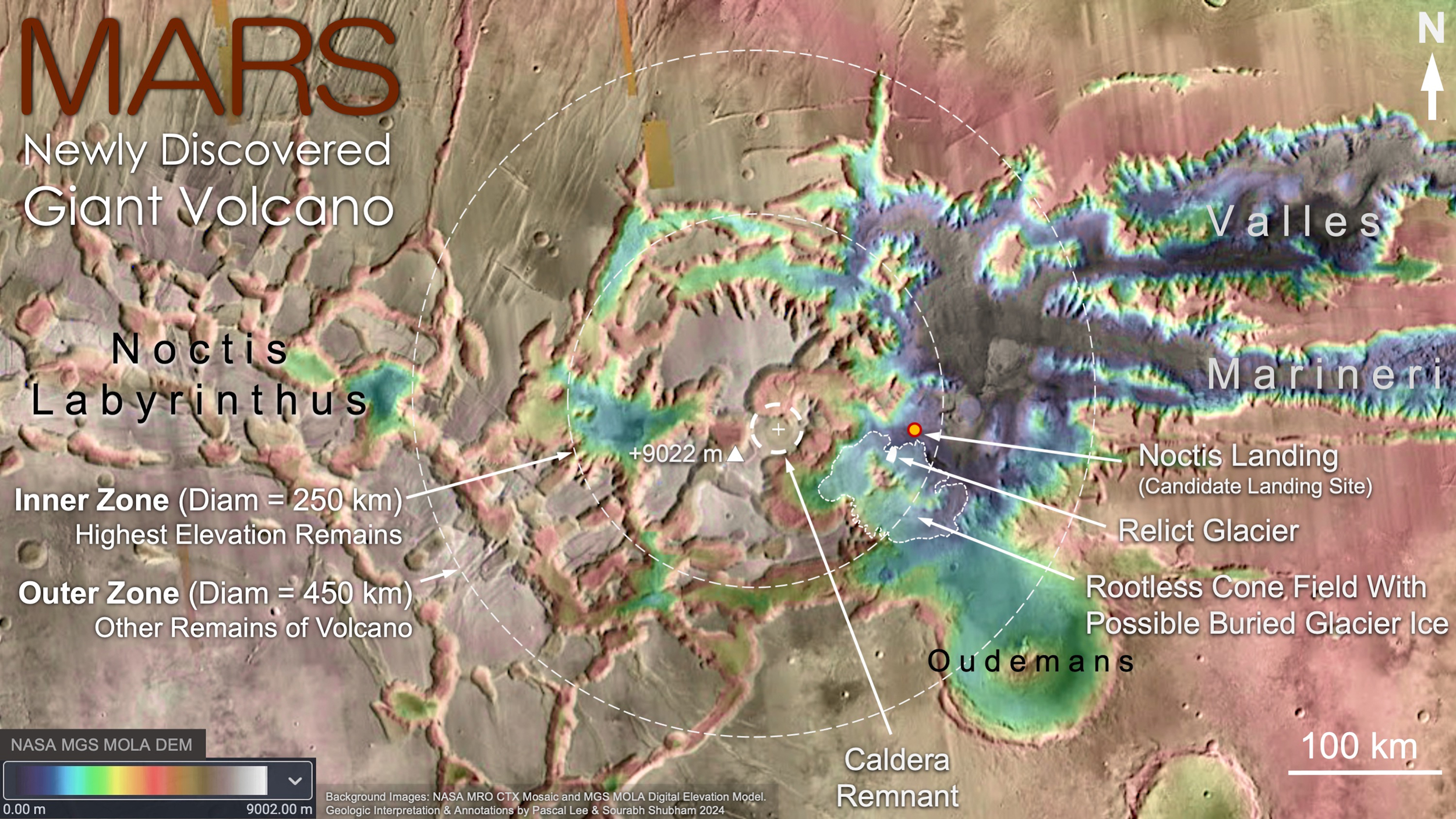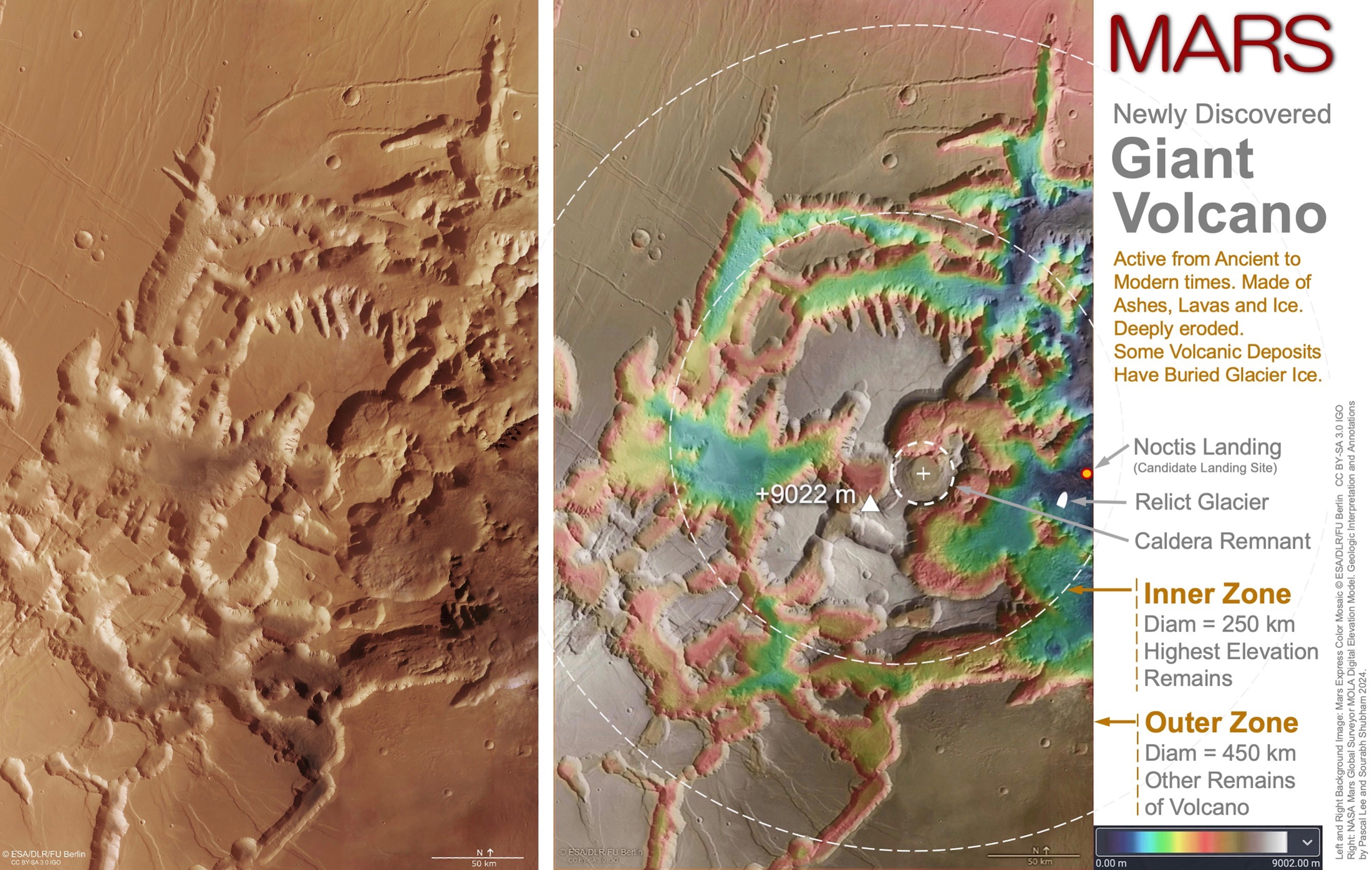Giant Mars volcano discovered 'hiding' in plain sight

The giant volcano had been hiding in plain sight for decades in one of Mars' most iconic regions.

The Red Planet continues to surprise us. New research has unveiled a giant volcano and possible sheet of buried glacier ice.
The site for this groundbreaking announcement is in the eastern part of the Tharsis volcanic province on Mars, near the planet's equator. Due to its eroded, tough-to-spot nature, the feature has been missed since Mariner 9 collected imagery of the site in 1971.
The finding was reported during the 55th Lunar and Planetary Science Conference now under way in The Woodlands, Texas, according to a statement from the SETI Institute. The study was conducted using data from NASA's Mariner 9, Viking Orbiter 1 and 2, Mars Global Surveyor, Mars Odyssey, and Mars Reconnaissance Orbiter missions, as well as the European Space Agency's Mars Express mission.
Related: Life on Mars could have thrived near active volcanoes and an ancient mile-deep lake
Potential destination?
The giant volcano had been hiding in plain sight for decades in one of Mars' most iconic regions, at the boundary between the heavily fractured maze-like Noctis Labyrinthus (Labyrinth of the Night) and the vast canyon system of Valles Marineris (Valleys of Mariner).
The area in which the newly documented volcano sits is home to three other well known giant volcanoes: Ascraeus Mons, Pavonis Mons, and Arsia Mons.
Although more eroded and less high than these other volcanic counterparts, the newly discovered volcano rivals the others in diameter: about 280 miles (450 kilometers and measures roughly 29,600 feet (9,022 meters) in elevation.
Breaking space news, the latest updates on rocket launches, skywatching events and more!
"Its discovery points to an exciting new place to search for life, and a potential destination for future robotic and human exploration," notes the SETI Institute's statement.
Long-sought "smoking gun"
Lead author of the study is Pascal Lee, a planetary scientist with the SETI Institute and the Mars Institute based at NASA Ames Research Center.
"We were examining the geology of an area where we had found the remains of a glacier last year when we realized we were inside a huge and deeply eroded volcano," Lee explains.
The volcano's enormous size and complex modification history indicate that it has been active for a very long time. Furthermore, in its southeastern part lies a thin, recent volcanic deposit beneath which glacier ice is likely still present.
"This area of Mars is known to have a wide variety of hydrated minerals spanning a long stretch of Martian history," explains Sourabh Shubham, a graduate student at the University of Maryland’s Department of Geology and the study's co-author.
"A volcanic setting for these minerals had long been suspected. So, it may not be too surprising to find a volcano here," Shubham added. "In some sense, this large volcano is a long-sought 'smoking gun.'"
Unknowns and mysteries
This new discovery, however, also underscores several mysteries.
For one, while it is clear that it has been active for a long time and began to build up early in Mars' history, what is unknown is exactly how early. Likewise, although it has experienced eruptions even in geologically speaking "modern times," it is not known if the feature is still volcanically active and might erupt again.
Mix in yet another unknown. If it has been active for a long time, could the combination of sustained warmth and water from ice have allowed the site to harbor life?
"It's really a combination of things that makes the Noctis volcano site exceptionally exciting," Lee senses. "It's an ancient and long-lived volcano so deeply eroded that you could hike, drive, or fly through it to examine, sample, and date different parts of its interior to study Mars' evolution through time."
Prime location
Lee concludes that its long history of heat interacting with water and ice "makes it a prime location for astrobiology and our search for signs of life."
Finally, with glacier ice likely still preserved near the surface in a relatively warm equatorial region on Mars, "the place is looking very attractive for robotic and human exploration," Lee said in the SETI statement.
The possible presence of glacier ice at shallow depths near the equator means that humans could potentially explore a less frigid part of the planet while still being able to extract water for hydration and manufacturing rocket fuel.
That made-on-Mars propellant is feasible by breaking down the water into hydrogen and oxygen.

Leonard David is an award-winning space journalist who has been reporting on space activities for more than 50 years. Currently writing as Space.com's Space Insider Columnist among his other projects, Leonard has authored numerous books on space exploration, Mars missions and more, with his latest being "Moon Rush: The New Space Race" published in 2019 by National Geographic. He also wrote "Mars: Our Future on the Red Planet" released in 2016 by National Geographic. Leonard has served as a correspondent for SpaceNews, Scientific American and Aerospace America for the AIAA. He has received many awards, including the first Ordway Award for Sustained Excellence in Spaceflight History in 2015 at the AAS Wernher von Braun Memorial Symposium. You can find out Leonard's latest project at his website and on Twitter.



